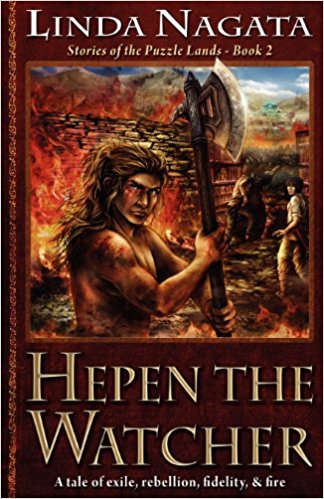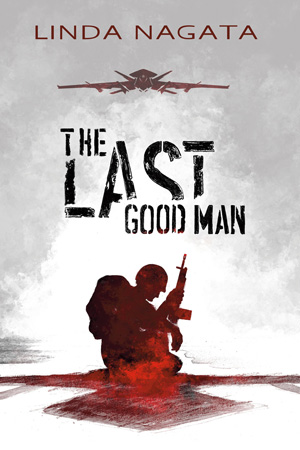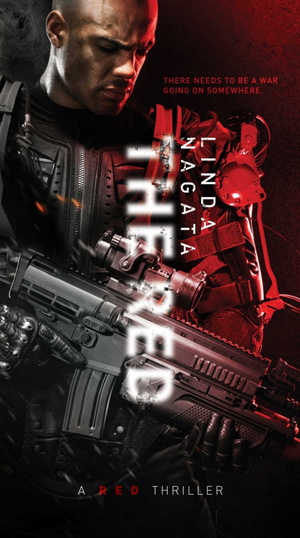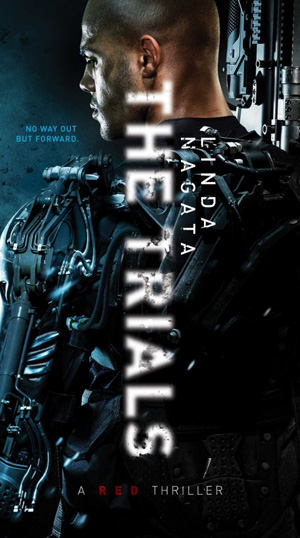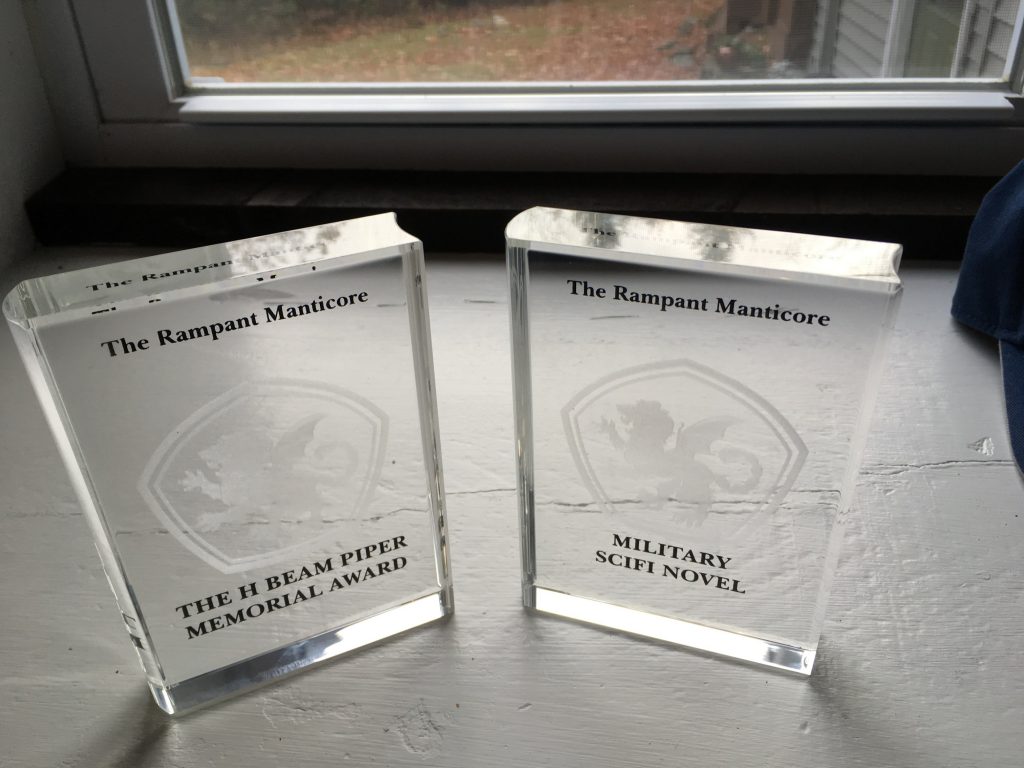(1) GET AN EARFUL. Today File 770 partnered with AudioFile Magazine to unveil “AudioFile’s 2021 Best Science Fiction & Fantasy Audiobooks”. Here is the link to the complete AudioFile Magazine – Best Of 2021 list.
We love hearing a good story well told, and we know that you do, too: the comfort and intimacy of a voice in your ear, the pleasure of being completely swept up in a narrative. That’s why, every December, we are so glad to celebrate audio excellence by selecting AudioFile’s Best Audiobooks. Thank you to all of the narrators, directors, producers, and publishers who filled our year with good listening.

(2) A PAY SERVICE NIXES DISCON III. “WeChat Restrictions, We Tried, We Really Tried” says DisCon III:
“We have had to remove WeChat as a payment option. Due to their restrictions on charitable giving, we are unable to use WeChat services at this time. Our tech team is working to find a workaround to help overseas fans who want to pay using WeChat. That said, all of our other avenues are still available, and there’s still time to join us at DisCon III. Please visit our member services page to purchase your membership.” said Mary Robinette Kowal, Chair of DisCon III.
(3) ON BROADWAY. [Item by Daniel Dern.] The opening of (Marvel) Hawkeye (new TV series) includes Clint “Hawkeye” Barton (and his 3 kids) going to a performance of Rogers The Musical (note that the signage looks very Hamiltonian), and we get to, delightfully, see about half of “I Can Do This All Day” about the NYC invasion, in the first Avengers movie.
Here’s one of many articles on this, including an audio with the full lyrics: “Hear Hawkeye’s Rogers: The Musical song, and how Marvel pulled it off” at Polygon.
… Written by Marc Shaiman and Scott Wittman, who have collaborated on other Broadway musical adaptations like Hairspray and Catch Me If You Can, Rogers is the MCU’s latest attempt to reminisce over past battles with a wink and nod. A little like the scene in Loki where the God of Mischief finds Infinity stones being used as paperweights, the silliness of Rogers asks the audience if they can remember what all the fuss was about….
(4) HE GAVE IT A SPIN. Camestros Felapton says “The Wheel of Time adaptation is looking good”.
…A strong cast gives the characters more weight and also pushes them closer to how Jordan intended them to be (from context) rather than how they come over in the books. Nynaeve in particular is clearly meant to be a strong-willed character in the books but comes over as just whiny and annoying (your impression may differ) in Jordan’s dialogue. However, the show’s Nynaeve is a really compelling character played by New Zealander Zoë Robins, full of intensity and suspicion of what she (correctly) perceives as a hostile world….
(5) FUTURE TENSE. The November 2021 entry in the Future Tense Fiction series is “Ride,” by Linda Nagata, a story about climate, public transportation, and AI in Hawaii.
…The boy waved at them, then turned again to Jasmine. “Give it a try,” he exhorted her in a conspiratorial whisper. “Promise you will?”
Those eyes.
Her smile brightened. She didn’t want to disappoint those eyes. So she played along, teasing, “I might.” And maybe she really would. It was just a little game, after all….
It was published along with a response essay by cities and transit journalist Henry Grabar: “What if an All-Knowing Algorithm Ran Traffic and Transit?”
I like to think of myself as deeply skeptical of the many internet algorithms telling me what I want and need. I turn off targeted advertising wherever I can. I use AdBlock to hide what’s left. Most of my YouTube recommendations are for concerts or sports highlights, but I know I’m just a few clicks away from a wild-eyed influencer telling me to gargle turpentine for a sore throat. Twitter trending topics? I regret clicking immediately.
But I make an exception for the sweet, all-knowing embrace of the Spotify algorithm, to whom I surrender my ears several times a day. This software doesn’t just know my taste in music better than my friends; it acts on it, with chains of songs that build off things that I know I like, or forgot I did….
(6) HARLAN IN THE WILDERNESS. Stephen Bowie interviewed Harlan Ellison in 1996 about his early days writing for television: “Harlan Hits Hollywood” at The Classic TV History Blog.
…I was going to ask you if you remembered watching “Memos From Purgatory” when it was first broadcast, but perhaps you don’t, since it wasn’t actually the first one.
It’s a moderately funny story about what happened the night it aired. I was living in Beverly Glen, in this little treehouse. The television set that I had was a real small TV, with rabbit ears, and the antenna was up the side of the mountain behind the house. I mean this house, literally and actually, sat half on a rock ledge and the other half sat in the crotch of a gigantic banyan tree. It was raining that night, it was raining terribly. And the antenna, which was up the hill – rabbit ears down in the house and an actual antenna up on the hill; I mean, there was no cable – well, the antenna fell over.
I had invited all these people to come and see the show, and we couldn’t get any reception. So a friend of mine volunteered to go up, and he put on my raincoat, and he stood up there in the pounding rain, a really torrential downpour. He stood up there holding the fuckin’ antenna up. And I was kind of, you know, upset that he was up there, not to mention that there were cougars or mountain cats – really, there were catamounts or cougars or whatever the fuck they are – up there running loose, because it’s all watershed land. And I was terrified that he was going to get eaten, or washed away, or drowned, or fall off the mountain, or something. So about midway through I went up and I took his place. And I came back drenched, soaking wet, I looked like a drowned rat, and everybody was raving about this thing, and I had only seen about half of it….
(7) DRAGON IT OUT. A new book says “George R.R. Martin flew to New York to ‘beg’ an HBO executive to make ‘Game of Thrones’ 10 seasons long, according to his agent” reports Yahoo!
HBO’s hit series “Game of Thrones” came to an end in 2019 with two shortened seasons, which brought the total to eight seasons and 73 episodes. But the story’s original creator, the author George R.R. Martin, pushed for up to 10 seasons and 100 total episodes, according to a new book.
New accounts of Martin’s wishes can be found in a book titled “Tinderbox: HBO’s Ruthless Pursuit of New Frontiers” by the journalist James Andrew Miller.
Miller, who conducted 757 interviews for the book, spoke with Martin, Martin’s agent, Paul Haas, and Richard Plepler, HBO’s former CEO.
“George would fly to New York to have lunch with Plepler, to beg him to do ten seasons of ten episodes because there was enough material for it and to tell him it would be a more satisfying and more entertaining experience,” Haas told Miller.
(8) IN XANADU. Henry Farrell points to the availability of the video of a panel he was on with Paul Krugman, Ada Palmer, Noah Smith, and Jo Walton. And he has a few more things he’d like to say in his post “The Future Finds Its Own Uses for Things” at Crooked Timber.
So this event on the relationship between social science and science fiction went live late last week. It has Paul Krugman, Ada Palmer, Jo Walton, Noah Smith and … me. I’ve been wanting to say something a little bit more about this relationship for a while. Here is one take, which surely misses out on a lot, but maybe captures some stuff too.
…The Hume quote captures a particular – and very common – way of thinking about the world. It suggests that beneath the vast procession of history, the extraordinary profusion of ways in which human beings organize their society, their politics and their economies, lies a hidden and coherent unity. He emphasizes “the constant principles of human nature” – other social scientists have other notions about what the underlying unity involves and entails. But from this perspective all the ways in which things are different across time and space are really illustrations of how they are really deeply the same. This is a powerful lens for understanding the world and perhaps changing it.
When Marco Polo counters Kublai Khan, he points towards quite the opposite phenomenon; how an apparent unity -an abstract of plane forces – can be opened up to disclose the quiddity of things. A chessboard is a plane divided into sixty-four squares – yet it is also something physical, made out of joined-together pieces of wood, each with its own history. The apparently all encompassing abstract unity conceals a world of variation. Unless you understand how the squares were formed – a year of drought; a frosty night; a caterpillar’s appetite; you cannot understand how the chessboard came to be as it is.
It is a little too simple to say that social science is on Hume’s side of the dialectic, while science fiction is on Marco Polo’s. What makes more sense, I think is that very good social scientists and very good science fiction writers each work the tensions between the two understandings of the world, more from the one side than the other….
(9) NAME YOUR PRICE. Filer Jane Sand’s novelette “Not Poppy Nor Mandragora” is in the newly released Fusion Fragment issue #9. The publishers invite readers to “download Fusion Fragment #9 for free or pay what you want!”
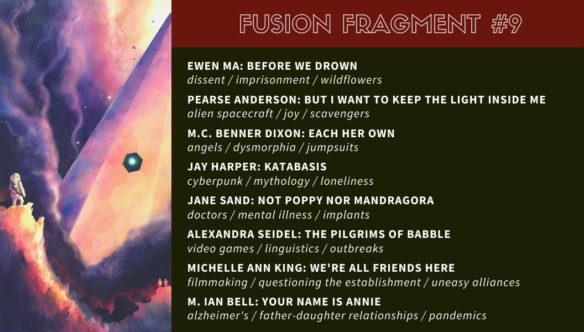
(10) CIRCUMNAVIGATING THE SPOILERS. I say, this Ars Technica article gives away the entire story, never mind spoilers! “David Tennant makes a dashing Phileas Fogg in Around the World in 80 Days preview”. It wasn’t easy to find an excerpt that didn’t blab some important part!
…Verne’s story, in turn, inspired the late 19th-century journalist Nellie Bly to make her own world tour, completing the trip in 72 days. She even met Verne in Amiens and wrote her own bestselling book about her adventures. Monty Python alum Michael Palin made the charming TV travelogue, Around the World in 80 Days with Michael Palin, in 1988, detailing his recreation of Fogg’s journey, without resorting to airplanes….
(11) MEDIA BIRTHDAY.
2002 — [Item by Cat Eldridge.] Nineteen years ago on NBC, It’s a Very Merry Muppet Christmas Movie first aired. It was the first film to be made for television by The Muppets franchise. It was directed by Kirk R. Thatcher (in his feature directorial debut though he earlier been hired by Nimoy to associate produce the Conspiracy ’87 Hugo-nominated Star Trek IV: The Voyage Home) and written by Tom Martin and Jim Lewis.
It starred the usual Muppet puppeteers (Steve Whitmire, Dave Goelz, Bill Barretta and Eric Jacobson) plus a number of human guests: David Arquette, Joan Cusack, Matthew Lillard, William H. Macy and Whoopi Goldberg. Executive producers Juliet Blake and Brian Henson, though the actual producers were Martin G. Baker and Warren Carr.
This is also the final Muppets production from the Jim Henson Company, as The Muppets were in their final years of ownership by the Henson family before being sold to Disney in 2004.
Critics were generally very impressed by this film with such comments as the Canadian Movie News saying it “is a medley of familiar Christmas classics such as It’s a Wonderful Life, A Christmas Story and The Grinch, amongst others, with a distinct Muppet spin.” Interestingly audience reviewers at Rotten Tomatoes were less impressed giving a mediocre fifty-one percent rating.

(12) TODAY’S BIRTHDAYS.
[Compiled by Cat Eldridge.]
- Born November 29, 1898 — C S Lewis. I first encountered him when reading The Screwtape Letters in University. I later read of course The Chronicles of Narnia which I found most excellent though I’ll admit that I’ve not read his Space Trilogy. (Died 1963.)
- Born November 29, 1910 — Kendell Foster Crossen. He was the creator and writer of the Green Lama stories. The character was a Buddhist crime fighter whose powers were activated upon the recitation of the Tibetan chant om mani padme hum. He also wrote Manning Draco series, an intergalactic insurance investigator, four of which are can be found in Once Upon a Star: A Novel of the Future. The usual suspects has a really deep catalog of his genre work, and the Green Lama stories have been made into audio works as well. (Died 1981.)
- Born November 29, 1918 — Madeleine L’Engle. Writer whose genre work included the splendid YA sequence starting off with A Wrinkle in Time and its sequels: A Wind in the Door, A Swiftly Tilting Planet, Many Waters, and An Acceptable Time. One of her non-genre works that I recommend strongly is the Katherine Forrester Vigneras series. She has a World Fantasy Award for Life Achievement. (Died 2007.)
- Born November 29, 1950 — Peter Hooten, 71. He played the title character in the late Seveties Dr. Strange film, well before the present MCU film reality existed. His other genre appearances are all in definitely low-grade horror films such as Orca, House of Blood and Souleater. And one Italian film that had so many name changes that I’d accused it of name laundering, including 2020 Texas Gladiators.
- Born November 29, 1955 — Howie Mandel, 66. He was the voice of Gizmo in Gremlins and Gremlins 2: The New Batch. His longest voice acting gig was on the Muppet Babies where he did a lot of different voices, and he voiced Sam-I-Am in In Search of Dr. Seuss which is not nearly as serious as it sounds.
- Born November 29, 1969 — Greg Rucka, 52. Comic book writer and novelist, known for his work on Action Comics, Batwoman and Detective Comics. If you’ve not read it, I recommend reading Gotham Central which he co-created with Ed Brubaker, and over at Marvel, the four-issue Ultimate Daredevil and Elektra which he wrote is quite excellent as well. I’ve read none of his novels, so will leave y’all to comment on those. He’s a character in the CSI comic book Dying in the Gutters miniseries as someone who accidentally killed a comics gossip columnist while attempting to kill Joe Quesada over his perceived role in the cancellation of Gotham Central.
- Born November 29, 1976 — Chadwick Boseman. Another death that damn near broke my heart. The Black Panther alias Challa in the Marvel metaverse. The same year that he was first this being, he was Thoth in Gods of Egypt. (If you’ve not heard of this, no one else did either as it bombed quite nicely at the box office.) He was Sergeant McNair on Persons Unknown which is at least genre adjacent I would say. And he even appeared on Fringe in the “Subject 9” episode as Mark Little / Cameron James. (Died 2020.)
(13) IT’S NOT SURPRISING. “‘The Simpsons’ Tiananmen Square Episode Missing From Disney+ Hong Kong; Discovery Leads to Censorship Concerns” reports Deadline.
An episode of The Simpsons during which the family visits Tiananmen Square is missing from Disney+’s Hong Kong platform.
Episode 12 of season 16 was found today to be absent from the streamer’s catalogue in the nation, having launched in Hong Kong earlier this month.
The episode features the family going to China to try to adopt a baby. At one point, they visit Tiananmen Square, which was the site of a deadly crackdown in 1989 against democracy protestors. A satirical sign in the cartoon square reads “On this site, in 1989, nothing happened.”
At time of publication, it is not clear whether Disney+ removed the episode or was ordered to by the authorities and Disney has not responded to requests for comment.
The discovery will lead to further concerns over censorship in Hong Kong….
(14) D&D DIVERSITY. “‘A safe haven’: how Dungeons & Dragons is slaying social anxiety” – the Guardian runs the numbers.
… Since its inception in the mid-1970s, the tabletop role-playing game Dungeons & Dragons (D&D) has brought together a far more diverse array of players than its stereotypes suggest. Earlier this year, the game’s publisher, Wizards of the Coast, released a report showing that, of its estimated 50 million players, 54% were younger than 30 and 40% identified as female. What it didn’t reveal was the rise in visibility of queer and neurodiverse players.
…For people such as Shadia Hancock, the founder of advocacy group Autism Actually and Dungeon Master to a group of young neurodiverse players, the therapeutic potential of the game has always been clear.
“It’s about creating a sense of community,” Hancock says. “I work out the players’ expectations at the beginning of a game. Some get really into creating their characters, some are more interested in finding items and exploring the world, others are really interested in how the characters met. We all have a mutual love of gaming, but we all want something different from the session.”
Some characteristics expressed by some of Hancock’s players – social anxiety, increased empathy, difficulty adapting to change, feeling overwhelmed in noisy environments – have become familiar to many Australians in the wake of lockdowns. Studies cited by the Australian Institute of Health and Welfare found reported levels of social anxiety increased over the past two years among all age groups, with young neurodiverse Australians even more likely to have experienced a decline in wellbeing.
“While other people are excited about going out, I’m filled with dread,” Hancock tells me. “With Covid, we [autistic communities] had all these sudden changes, often with short notice, and there was this need to constantly adapt to new rules. Not knowing what is coming up is really anxiety-inducing. During the pandemic, that became a shared experience.”
(15) NEXT TIME, TAKE THE TRAIN. John Holbo’s “The Ones Who Take the Train to Omelas” is adorned with a big Omelas-themed travel poster (which you can see at the link.)
*Confused? This page contains a parody of a famous story, “The Ones Who Walk Away From Omelas”, by Ursula K. Le Guin. I’d point you to it, but there are no versions legally free on the web. Buy a book! Read Wikipedia. If you are somehow here about the BTS song – sorry, I don’t know about that. (But with half a billion hits, somebody probably does.)
I’ve written notes on my take on Le Guin. An essay! That’s here.
Also, once I made the graphics I tossed ’em on Redbubble. Forgive me. It seemed funny.
“I incline to think that people from towns up and down the coast have been coming in to Omelas during the last days before the Festival on very fast little trains and double-decked trams.”
– Ursula K. Le Guin, “The Ones Who Walk Away From Omelas”
(16) DS9 ON NFT. Voice actor Joshua Martin put together a parody video where Deep Space Nine’s “Quark and Odo discuss NFTs and Crypto Currency”. There’s also a Twitter thread that starts here.
(17) I SCREAM, YOU SCREAM. SlashFilm reveals “This Is What You’re Really Hearing When R2-D2 Screams In Star Wars”.
…One fateful moment of stress managed to help define a character through more than four decades and nine movies in the Skywalker saga — and counting.
(18) STAND BY TO ENTER HYPE-SPACE. Gizmodo’s Rob Bricken pans Disney World’s effort to sell people on its new theme hotel: “Star Wars Galactic Starcruiser Hotel Preview Looks Unimpressive”.
If you’ve been slavering for your chance to spend thousands upon thousands of dollars to head to Walt Disney World’s upcoming Star Wars Galactic Starcruiser experience, might I suggest you towel off your chin for the time being? Disney has released a video preview of some of what awaits families who come aboard the Halcyon, and it doesn’t look particularly enticing.
The first thing you should know about this video is that it stars Disney Parks Imagineer Ann Morrow Johnson and The Goldbergs’ sitcom actor Sean Giambrone. The two take a very short tour of the Starcruiser, but instead of them just talking like normal people about what people who come to the Halcyon can expect, it’s scripted and painfully unfunny. You’ve been warned. But this video also raises an important question, which is: Disney wants $6,000 for this?
[Thanks to Andrew Porter, Michael Toman, Cat Eldridge, Danny Sichel, Jayn, Bill, Joey Eschrich, Mike Kennedy, Martin Morse Wooster, JJ, and John King Tarpinian for some of these stories. Title credit belongs to File 770 contributing editor of the day Joe H.]






